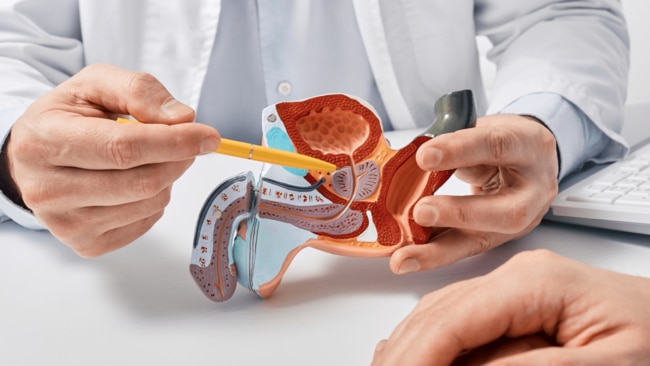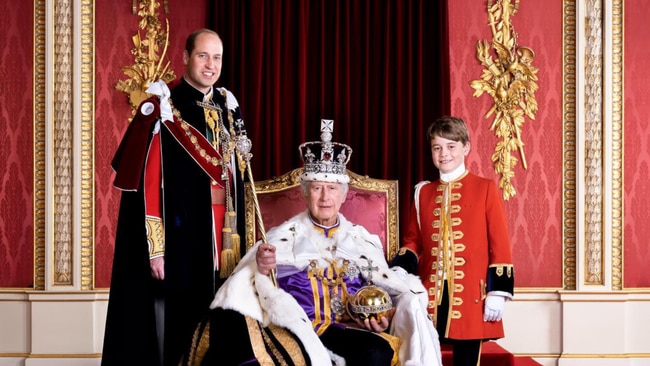King Charles to undergo prostate treatment – but what does that mean?
Time to refresh your knowledge
Lifestyle
Don't miss out on the headlines from Lifestyle. Followed categories will be added to My News.
What exactly is going on with the King of the United Kingdom’s prostate? It’s a question you probably never expected to ask yourself, but an important one nonetheless. Here’s what you need to know about the latest Royal health update.
It’s no doubt been a stressful week in the British Royal household, with two of the family’s most senior working members undergoing potentially serious medical treatment.
In a statement released by Kensington Palace, it was reported The Princess of Wales underwent a successful planned abdominal surgery and has begun her long road to recovery. Now, King Charles III is gearing up to undergo treatment for a benign prostate condition, which Buckingham Palace has described as a ‘corrective treatment’ for an enlarged gland.
Given the monarch is said to only be postponing one day of his official duties for the procedure, we can safely assume his condition is relatively minor. But still, the Palace rarely publicises the Royal Family’s private medical updates, so why is the King’s latest announcement so significant?
Like what you see? Sign up to our bodyandsoul.com.au newsletter for more stories like this.
If you’ve never given much thought to the role of your prostate, or are perhaps part of the population that lacks one altogether, you probably have a few questions. Here’s everything you need to know about the King’s upcoming procedure, and why treatment of this calibre is a little more complicated than it may seem.
What does the prostate do?
If you’re struggling to recall the diagrams and giggle-fuelled class discussions from your ninth-grade health course, relax. The prostate gland plays a pretty significant role in reproduction, so understanding how it works, as well as some of the common conditions that can arise with age, is essential.
In short, the prostate produces part of the seminal fluid, or semen. This fluid is then mixed with sperm from the testes, helping them survive and ultimately reach their destination, (be that a ready-to-be-fertilized egg, or a ready-to-be-washed hand towel).
Located deep inside the groin, between the base of the penis and the rectum, the male body typically develops the prostate during adolescence, responding to the gush of testosterone that takes over the body.
While conditions relating to the prostate tend to mostly affect older men, prostate cancer remains one of the most commonly diagnosed in Australia (second only to skin cancer), accounting for 33 per cent of all male diagnoses each year.

The controversy surrounding prostate cancer screening
As any health professional would agree, screening and proactive observation are the best defences against developing a life-threatening cancer diagnosis. So, when should someone start undergoing screening for prostate cancer?
Unlike bowel and breast cancer, there is no government-organised national population prostate cancer screening program, meaning the decision to begin screening for any issues relies heavily on personal concern and professional recommendation from your GP or specialist.
According to The Royal Australian College of General Practitioners, the lack of an organised screening program stems from the ongoing debate around the benefits of early detection versus the risks associated with testing and treatment in some cases considered to be ‘low risk’.
The controversy surrounding testing for the disease comes as a result of a significant number of men experiencing ongoing unwanted side effects after undergoing treatment for relatively low-risk conditions, such as urinary incontinence and erectile dysfunction.
For asymptomatic men who are interested in screening for cancer (with no family history of the disease), professionals recommend undergoing a PSA blood test or rectal examination every few years from the age of 50. For men with relatives who have developed prostate cancer previously, proactive screening is often recommended from the age of 40.

So, what does an ‘enlarged prostate’ mean?
Benign prostate enlargement is a non-cancerous, extremely common, and low-risk condition affecting a large percentage of older men around the world, with the 75-year-old King’s diagnosis proving even the most untouchable of people aren’t immune.
“A natural thing that happens to our prostates as they get older is they get bigger. It’s not so much a disease – I describe it as natural ageing of the prostate,” Professor Declan Murphy, director of genitourinary oncology at Peter MacCallum Cancer Centre, shares with the Sydney Morning Herald.
“You have to remember what the prostate does: it’s the organ of ejaculation. It’s there for reproduction. I don’t think Mother Nature really intended it to live to be 60, 70, or 80 years old because it’s done its job by then. It loses its ability to have normal regulation,” he adds.
So, is an enlarged prostate just a natural byproduct of aging? One study found over half of American men have some degree of cancer in their prostate glands by age 80, but most will be slow-growing and benign.
“All men accumulate them during their life, and all die with cancer cells inside their prostate,” explains Deakin University evolutionary biologist Associate Professor Beata Ujvari.
An enlarged prostate can considerably impact the quality and frequency of urinary function in older men, marked by symptoms such as incontinence and bloody or painful urination.
If you are experiencing any symptoms or irregularities relating to the function of your prostate, reproductive health or urinary function, always seek advice from your GP or specialist.
More Coverage
Originally published as King Charles to undergo prostate treatment – but what does that mean?




